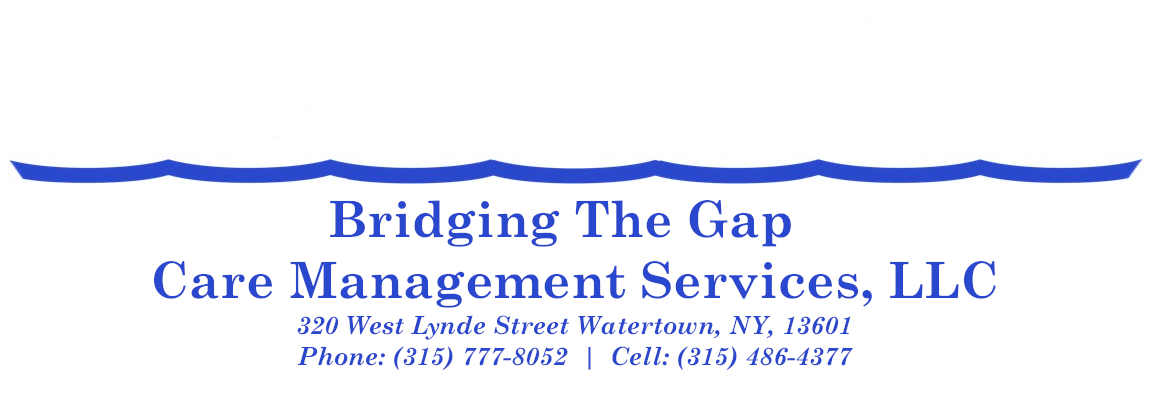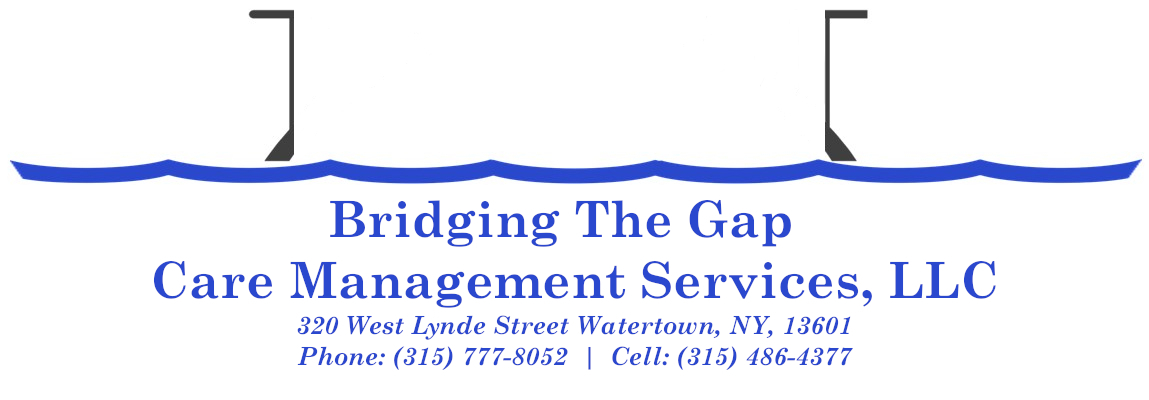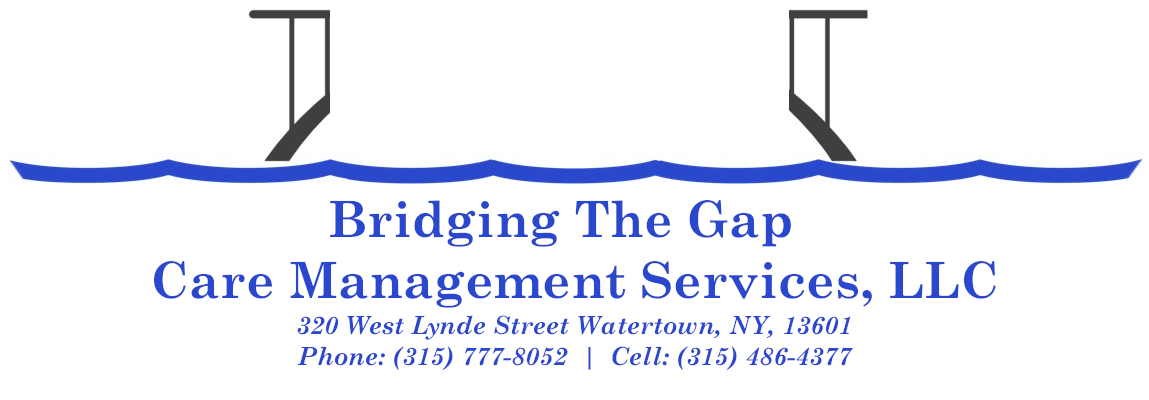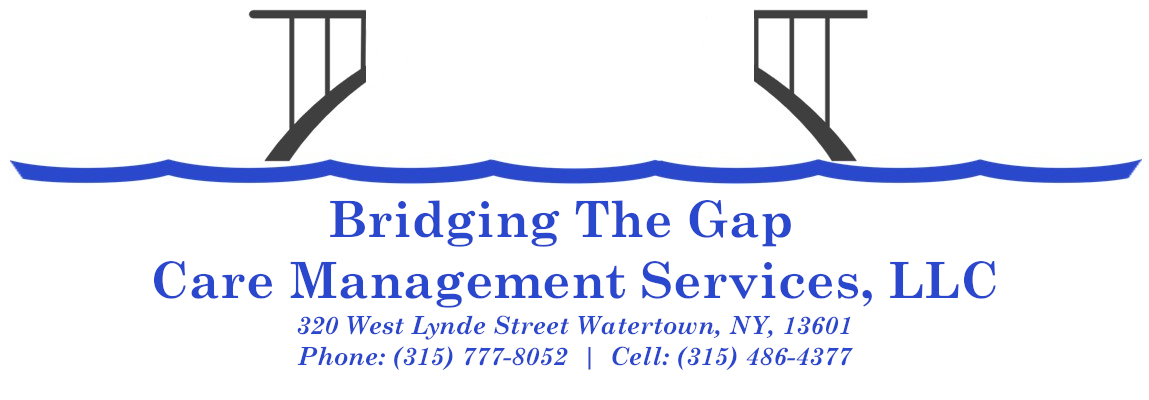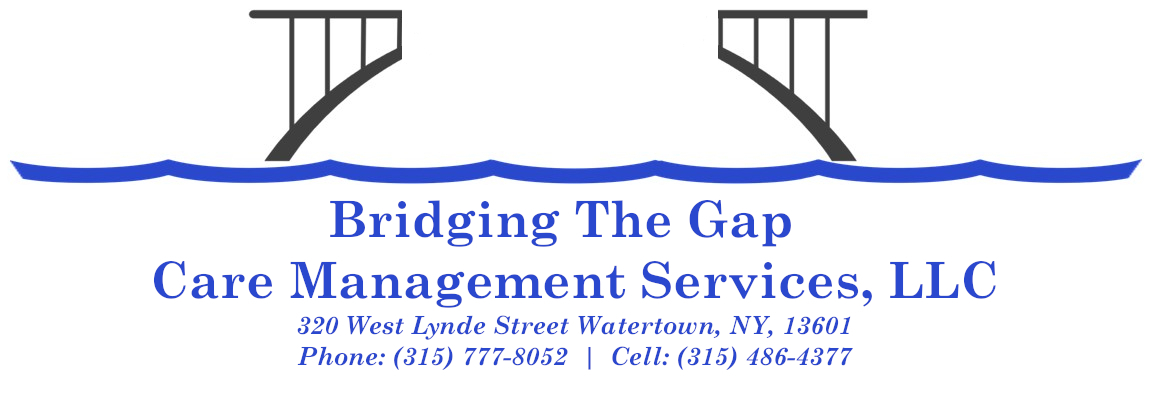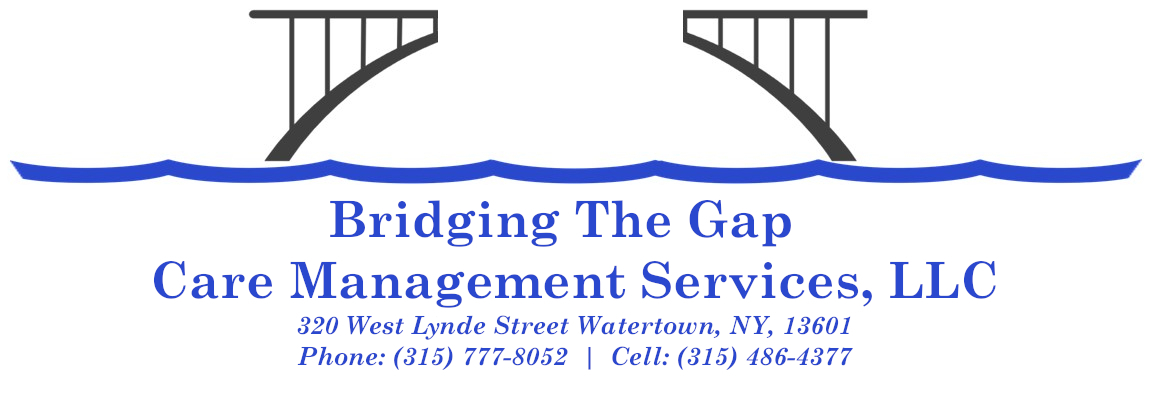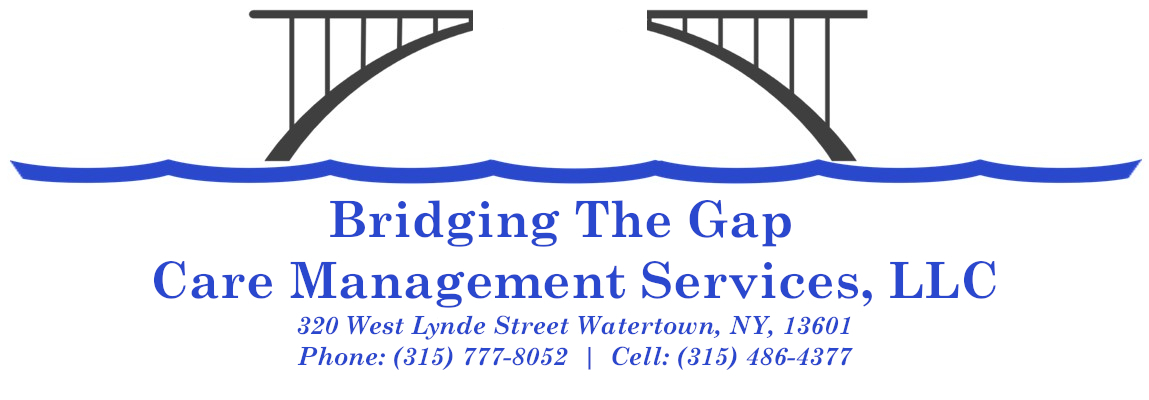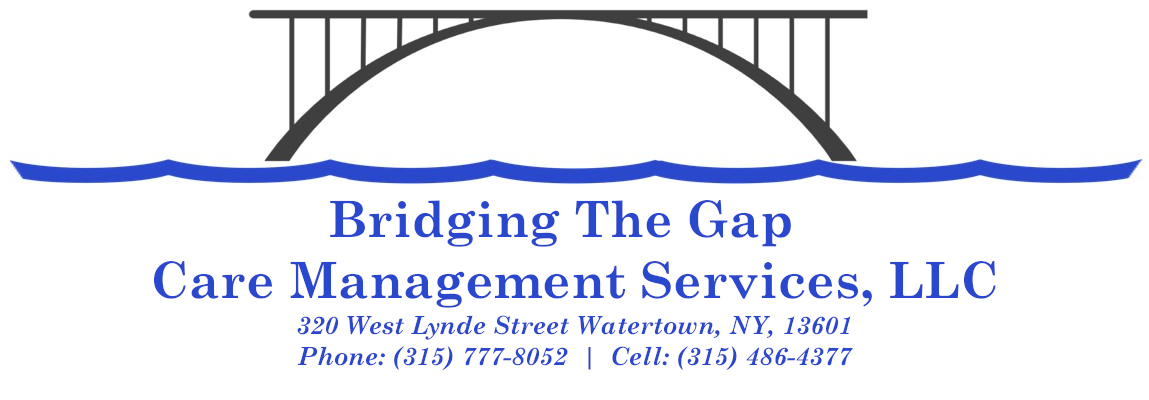Bridging The Gap Care Management Services is built around six core services that support all aspects of care:
- Comprehensive Care Management
- Care Coordination and Health Promotion
- Comprehensive Transitional Care
- Patient and Family Support
- Community/Social Service Referrals
- Linking Services Via Health Information Technology
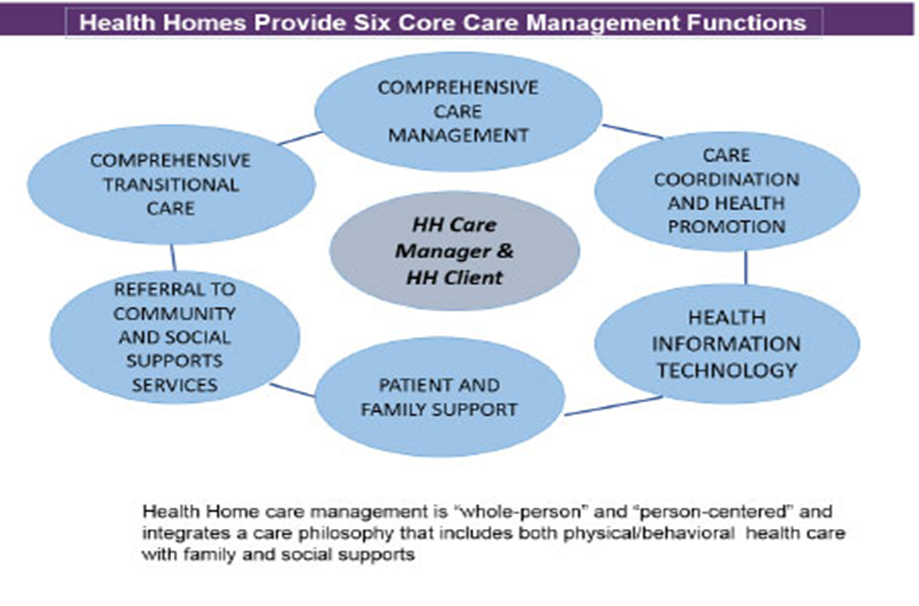
1. Comprehensive Care Management
Policies and procedures are in place to create, document, execute and update an individualized, patient-centered plan of care for each individual.
1a. A comprehensive health assessment that identifies medical, mental health, chemical dependency and social service needs is developed.
1b. The individual’s plan of care integrates the continuum of medical, behavioral health services, rehabilitative, long term care and social service needs and clearly identifies the primary care physician/nurse practitioner, specialist(s), behavioral health care provider(s), care manager and other providers directly involved in the individual’s care.
1c. The individual (or their guardian) play a central and active role in the development and execution of their plan of care and should agree with the goals, interventions and time frames contained in the plan.
1d. The individual’s plan of care clearly identifies primary, specialty, behavioral health and community networks and supports that address their needs.
1e. The individual’s plan of care clearly identifies family members and other supports involved in the patient’s care. Family and other supports are included in the plan and execution of care as requested by the individual.
1f. The individual’s plan of care clearly identifies goals and time frames for improving the patient’s health and health care status and the interventions that will produce this effect.
1g. The individual’s plan of care must include outreach and engagement activities that will support engaging patients in care and promoting continuity of care.
1h. The individual’s plan of care includes periodical reassessment of the individual needs and clearly identifies the patient’s progress in meeting goals and changes in the plan of care based on changes in patient’s need.
2. Care Coordination and Health Promotion
2a. The Health Home provider is accountable for engaging and retaining Health Home enrollees in care; coordinating and arranging for the provision of services; supporting adherence to treatment recommendations; and monitoring and evaluating a patient’s needs, including prevention, wellness, medical, specialist and behavioral health treatment, care transitions, and social and community services where appropriate through the creation of an individual plan of care.
2b. The Health Home provider will assign each individual a dedicated care manager who is responsible for overall management of the patient’s care plan. The Health Home care manager is clearly identified in the patient record. Each individual enrolled with a Health Home will have one dedicated care manager who has overall responsibility and accountability for coordinating all aspects of the individual’s care. The individual cannot be enrolled in more than one care management program funded by the Medicaid program.
2c. The Health Home provider must describe the relationship and communication
between the dedicated care manager and the treating clinicians that assure that the care manager can discuss with clinicians on an as needed basis, changes in patient condition that may necessitate treatment change (i.e., written orders and/or prescriptions).
2d. The health home provider must define how patient care will be directed when conflicting treatment is being provided.
2e. The Health Home provider has policies, procedures and accountabilities (contractual agreements) to support effective collaborations between primary care, specialist and behavioral health providers, evidence-based referrals and follow-up and consultations that clearly define roles and responsibilities.
2f. The Health Home provider supports continuity of care and health promotion through the development of a treatment relationship with the individual and the interdisciplinary team of providers.
2g. The Health Home provider supports care coordination and facilitates collaboration through the establishment of regular case review meetings, including all members of the interdisciplinary team on a schedule determined by the Health Home provider. The Health Home provider has the option of utilizing technology conferencing tools including audio, video and /or web deployed solutions when security protocols and precautions are in place to protect PHI.
2h. The Health Home provider ensures 24 hours/seven days a week availability to a care manager to provide information and emergency consultation services.
2i. The Health Home provider will ensure the availability of priority appointments for Health Home enrollees to medical and behavioral health care services within their Health Home provider network to avoid unnecessary, inappropriate utilization of emergency room and inpatient hospital services.
2j. The Health Home provider promotes evidence based wellness and prevention by linking Health Home enrollees with resources for smoking cessation, diabetes, asthma, hypertension, self-help recovery resources, and other services based on individual needs and preferences.
2k. The Health Home provider has a system to track and share patient information and care needs across providers and to monitor patient outcomes and initiate changes in care, as necessary, to address patient need.
3. Comprehensive Transitional Care
3a. The Health Home provider has a system in place with hospitals and residential/rehabilitation facilities in their network to provide the Health Home prompt notification of an individual’s admission and/or discharge to/from an emergency room, inpatient, or residential/rehabilitation setting.
3b. The Health Home provider has policies and procedures in place with local practitioners, health facilities including emergency rooms, hospitals, and residential/rehabilitation settings, providers and community-based services to help ensure coordinated, safe transitions in care for its patients who require transfers in the site of care.
3c. The health home provider utilizes HIT as feasible to facilitate interdisciplinary collaboration among all providers, the patient, family, caregivers, and local supports.
3d. The health home provider has a systematic follow-up protocol in place to assure timely access to follow-up care post-discharge that includes at a minimum receipt of a summary care record from the discharging entity, medication reconciliation, timely scheduled appointments at recommended outpatient providers, care manager verification with outpatient provider that the patient attended the appointment, and a plan to outreach and re-engage the patient in care if the appointment was missed.
4. Patient and Family Support
4a. Patient’s individualized plan of care reflects patient and family or caregiver preferences, education and support for self-management, self-help recovery, and other resources as appropriate.
4b. Patient’s individualized plan of care is accessible to the individual and their families or other caregivers based on the individual’s preference.
4c. The Health Home provider utilizes peer supports, support groups and self-care programs to increase patients’ knowledge about their disease, engagement and self-management capabilities, and to improve adherence to prescribed treatment.
4d. The Health Home provider discusses advance directives with enrollees and their families or caregivers.
4e. The health home provider communicates and shares information with individuals and their families and other caregivers with appropriate consideration for language, literacy and cultural preferences.
4f. The Health Home provider gives the patient access to care plans and options for accessing clinical information.
5. Referral to Community and Social Support Services
5a. The Health Home provider identifies available community-based resources and actively manages appropriate referrals, access, engagement, follow-up and coordination of services.
5b. The Health Home provider has policies, procedures and accountabilities (contractual agreements) to support effective collaborations with community-based resources, which clearly define roles and responsibilities.
5c. The plan of care should include community-based and other social support services as well as healthcare services that respond to the patient’s needs and preferences and contribute to achieving the patient’s goals.
6. Use of Health Information Technology (HIT) to Link Services
Initial Standards
6a. Health Home provider has structured information systems, policies, procedures and practices to create, document, execute, and update a plan of care for every patient.
6b. Health Home provider has a systematic process to follow-up on tests, treatments, services and, and referrals which is incorporated into the patient’s plan of care.
6c. Health Home provider has a health record system which allows the patient’s health information and plan of care to be accessible to the interdisciplinary team of providers and which allows for population management and identification of gaps in care including preventive services.
6d. Health Home provider makes use of available HIT and accesses data through the regional health information organization/qualified entity to conduct these processes, as feasible.
Final Standards
6e. Health Home provider has structured interoperable health information technology systems, policies, procedures and practices to support the creation, documentation, execution, and ongoing management of a plan of care for every patient.
6f. Health Home provider uses an electronic health record system that qualifies under the Meaningful Use provisions of the HITECH Act, which allows the patient’s health information and plan of care to be accessible to the interdisciplinary team of providers. If the provider does not currently have such a system, they will provide a plan for when and how they will implement it.
6g. Health Home provider will be required to comply with the current and future version of the Statewide Policy Guidance, which includes common information policies, standards and technical approaches governing health information exchange.
6h. Health Home provider commits to joining regional health information networks or qualified health IT entities for data exchange and includes a commitment to share information with all providers participating in a care plan. RHIOs/QE (Qualified Entities) provides policy and technical services required for health information exchange through the Statewide Health Information Network of New York (SHIN-NY).
6i. Health Home provider supports the use of evidence-based clinical decision-making tools, consensus guidelines, and best practices to achieve optimal outcomes and cost avoidance.
For Individuals / Families:
Coordinated Care for Improved Health
There is no more important job than caring for yourself or for your child(ren). We have to make decisions for ourselves or for our child(ren) so that we can lead healthy productive lives. Sometimes even with our best efforts there are times when this can be challenging, to say the least. Navigating the complex world on behavioral health, medical health and social services can be overwhelming. There are times when we need support, guidance and assistance.
Bridging The Gap Care Management Services can provide the support you are looking for. Our agency provides effective coordination of any and all services that your or your child(ren) may need, including behavioral health, medical and social services, and more.
